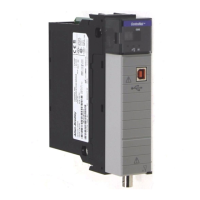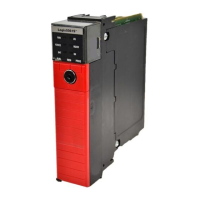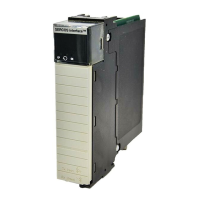Rockwell Automation Publication CNET-IN005A-EN-P - May 2011 13
Install a 1756 ControlNet Communication Module Chapter 1
Connect the Module to a
ControlNet Network
You can connect the module to the ControlNet network by using a tap (catalog
number 1786-TPR, 1786-TPS, 1786-TPYR, 1786-TPYS, or 1786-TCT2BD1).
This example shows a ControlNet network using redundant media.
WARNING: If you connect or disconnect the communication cable with
power applied to this module or any device on the network, an electrical
arc can occur. This could cause an explosion in hazardous location
installations.
Be sure that power is removed or the area is nonhazardous before
proceeding.
WARNING: The network access port (NAP) on 1756-CNB/E and
1756-CNBR/E modules is intended for temporary local programming
purposes only and not intended for permanent connection. If you connect
or disconnect the NAP cable with power applied to this module or any
device on the network, an electrical arc can occur. This could cause an
explosion in hazardous location installations.
Be sure that power is removed or the area is nonhazardous before
proceeding.
WARNING: The USB port on 1756-CN2/B, 1756-CN2R/B, and
1756-CN2RXT modules is intended for temporary local programming
purposes only and not intended for permanent connection. If you connect
or disconnect the USB cable with power applied to this module or any
device on the USB network, an electrical arc can occur. This could cause
an explosion in hazardous location installations. Be sure that power is
removed or the area is nonhazardous before proceeding.
For network connections, we recommend taps with a straight connector
(catalog number 1786-TPS or 1786-TPYS) because of the location of the
BNC connectors on the bottom of the module.
1756-CN2R/B
Module in a
1756-A4 Chassis
ControlNet Node
Redundant Media
(Optional)
ControlNet Node
ControlNet Link

